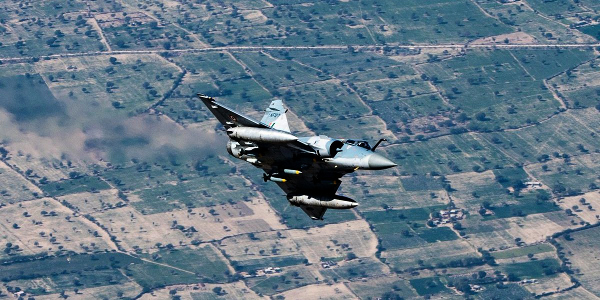India’s diplomatic missions and offices in Kabul and Kandahar have been put on high alert after intelligence inputs indicated that cadre of terror groups Jaish-e-Mohammed (JeM) and Lashkar-e-Taiba (LeT) have shifted to Kunar, Nangarhar, Nuristan and Kandahar provinces of Afghanistan after the Indian Air Force’s strike on the Balakot terror camp.
Indian Air Force (IAF) Mirage jets attacked JeM’s Balakot terror camp at Manshera in Pakistan, retaliating to the February 14 attack by a Jaish suicide-bomber on a Central Reserve Police Force (CRPF) convoy in Pulwama, Jammu & Kashmir.
According to documents reviewed by Hindustan Times, both the Pakistan-based proscribed groups have joined hands with the Afghan Taliban and Afghan insurgent group, Haqqani Network, across the Durand Line that separates Pakistan from Afghanistan, for training their extremist cadre in subversive activity. It is perhaps due to this reason that the Modi government has not taken at face value the action taken by Pakistan’s Imran Khan government on July 1-2 on 15 over-ground LeT leaders and five charity organisations linked to terror funding. India has called for visible and verifiable action against armed terror groups and not window-dressing.
Indian security agencies believe that the terrorist cadre’s shift to across the Durand Line has been done to avoid black-listing of Pakistan by the Financial Action Task Force (FATF) in its Paris conference later this year. The multilateral body formed to crack down on cross-border money laundering and terror financing has been extremely critical of Pakistan and placed it on a grey list.
Indeed, people familiar with the matter in India’s counterterror agencies say that even as Pakistan was launching its July actions, Indian diplomatic establishments, including the embassy in Kabul, were under threat from a heavily-armed group of JeM terrorists led by Haji Abdul Safi. There was also a threat from another terrorist Qari Wari Gul to carry out a vehicle-borne IED attack on the Indian Embassy in Kabul. And there was an alert against a Taliban attack on the Indian consulate in Kandahar. The people added that these were very real threats.
The North Block has also been informed that a significant number of Jaish cadre shifted to Kot and Momandara (Nangarhar); Sanguin and Marja (Helmand); Logan, Nawa (Ghazni), Zurmat (Paktia), Kunar, Faryab and Kunduz provinces of Afghanistan in coordination with the Taliban. Intelligence reports also indicate that both the Taliban and the Haqqani Network offered shelter to Jaish emir Maulana Masood Azhar in Afghanistan in February 2019 but the latter felt more safe under the protection of the Pakistani Army in Bhawalpur.
The revelation about increased JeM footprint in Afghanistan came when two of its terrorists, identified as Sediq Akbar and Ataullah were arrested by Afghan National Security Force in January this year from Jalalabad while they were en-route to Kabul. Trained at Markaz Usman-e-Ali in Bhawalpur and Balakot terror camps, the two revealed that they had been tasked to conduct surveillance on Indian interests in Kabul and Kandahar.
Apart from this, LeT has established training centres for its cadre in Nangarhar, Nuristan, Kunar, Helmand and Kandahar provinces of Afghanistan. It has moved its cadre from Peshawar to Kabul, and also decided to train its cadre in subversion and sabotage with the help of Taliban.
A recent Pentagon report noted that the LeT, with more than 300 fighters in Afghanistan, posed a significant threat to the US and allied forces. The group has also been instrumental in forging peace between Taliban and so-called Islamic State of Khyber-Paktunkhwa.
Source: HT
Image Courtesy: DD News
You may also like
-
Beware! Chinese Hackers are Using VLC Media Player to Spy on You
-
Israel Participates in US Mideast Naval Exercise wih Saudi Arabia and Oman – IMX 22
-
Pakistani Establishment Controlling ‘Family Business’ of Selling Kashmir Narrative, Uses Issue as Survival Strategy: Report
-
After Suspending Twitter ‘Indefinitely’, Nigerian Govt Joins Made-In-India Microblogging Platform ‘Koo’
-
Pam Gosal, First Indian-Origin Woman to be Scottish Lawmaker
